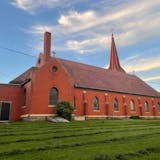As deputy commissioner of elections for Linn County, Iowa, Rebecca Stonawski is tracking hundreds of details to prepare for Election Day in November, when voters in the Cedar Rapids area, like those in the rest of the nation, will mark their ballots.
One of those tasks on her to-do list is sending a card to congratulate a 90-year-old woman on her big birthday. The recipient is the oldest and longest-serving poll worker in the county.
"I think she's been at it for 40 years. We appreciate it when people keep coming back and we're glad when they feel that connected," said Stonawski. "We're counting on her again."
The front line of democracy
On Election Day, about a million poll workers will participate in the massive effort to help their fellow citizens vote. These workers will put in long hours in more than 100,000 precincts located in religious buildings, schools and fire stations set up as makeshift polling places.
Many jurisdictions are still looking for people who would be willing to join the army of citizen poll workers who assist their neighbors in the voting process. The U.S. Election Assistance Commission lists each of the 50 states and their individual requirements for what is required to be a poll worker.
"Poll workers are the front line of democracy. They're focused on procedure, security and setting up the culture in the polling place to deliver a good voter experience. They're crucial to securing elections and managing custody of those precious votes," said Dana Chisnell, co-founder of the Center for Civic Design and editor of the Field Guides to Ensuring Voter Intent. Chisnell has taught thousands of election officials how to improve ballots, voter guides, websites and other election materials.
People 60 and over have traditionally answered the call to serve on Election Day in large numbers. According to the nonpartisan U.S. Election Assistance Commission, in 2016 more than half of the nation's poll workers were over 60, with 32 percent of them aged 61 to 70 and another 24 percent age 71 or older.
"There are two clusters of older poll workers. Some started as young adults, got hooked on being part of the process and have been coming back for decades. Others start when they cut back on work or retire and have the time and flexibility to participate," said Chisnell.


